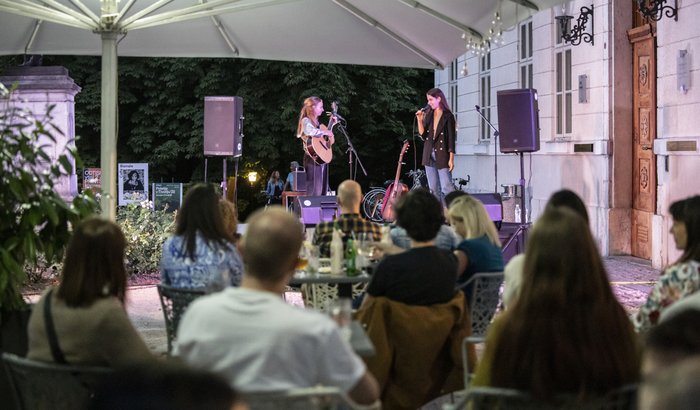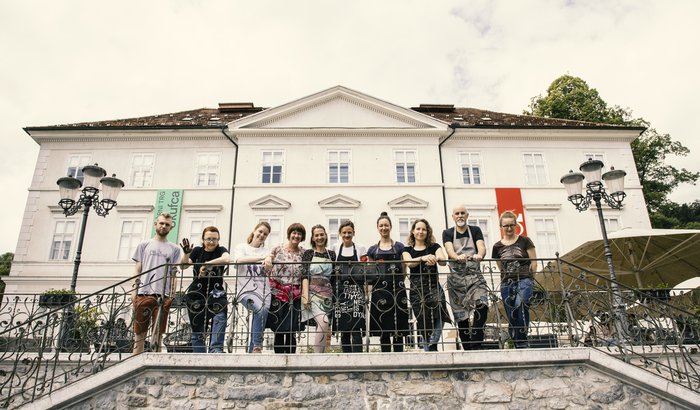Christian Guerematchi: In the Cultural Embrace
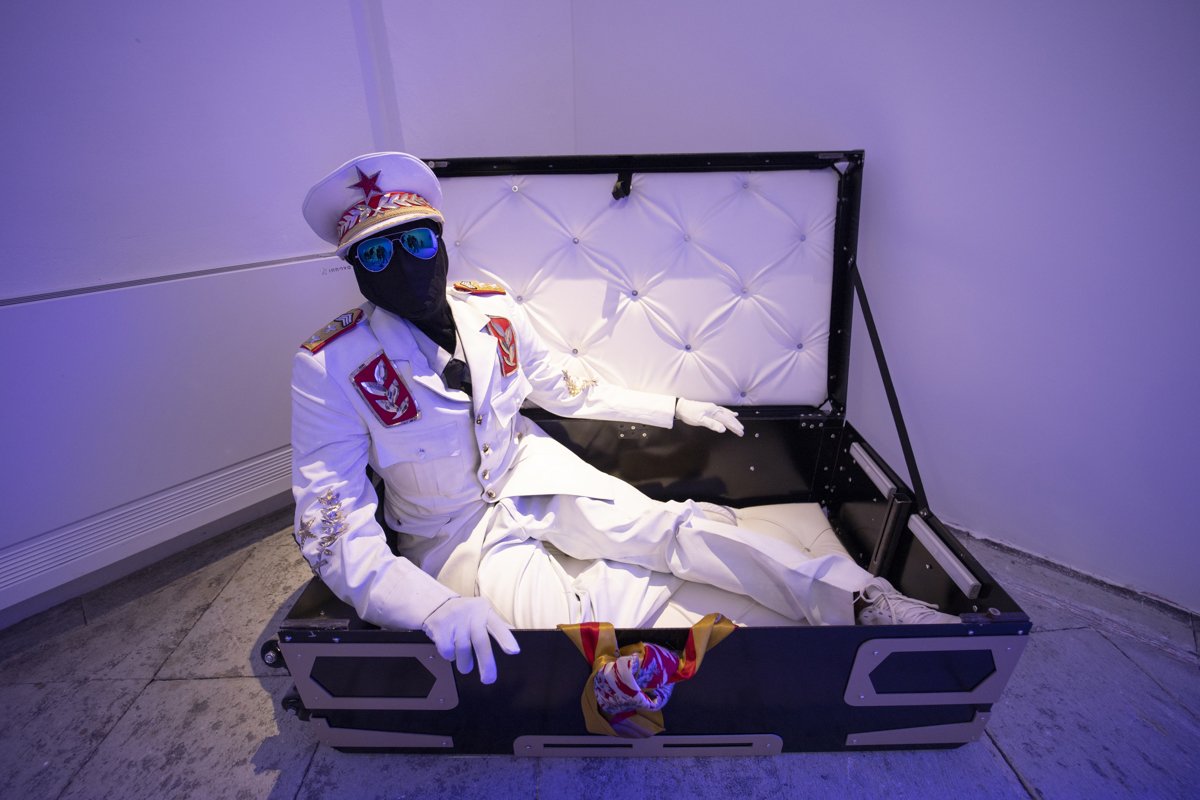
Christian Guerematchi is a dance maker and researcher, born in Slovenia, who lives and works in Amsterdam, the Netherlands. He participated in the 35th Ljubljana Biennale of Graphic Arts with his project Blaq Tito Addressing the Parliament of Ghosts (2022). He returned to Ljubljana between 18 November and 6 December 2024 as an artist-in-residence of the From Biennale to Biennale project, with which we celebrate 70 years of the Ljubljana Biennale of Graphic Arts and announce its 36th edition in 2025.
During the research residency, he again focused on the usual topics of his art: black European identity and the narratives of the black body. He explored the feeling of duality and the connecting of different cultural and social environments. It was a special challenge for him to find a way to think about the moving body within the symbolically and culturally marked Švicarija – also as a space of transitions and adaptations to historical circumstances. His performance, which he performed on the MGLC Švicarija Open Day (1 December 2024), consisted of a video (cooperation with Ana Čigon) and two live dance positions. It changed the residency apartment into a temporary immersive experience of the “cultural embrace”, where the boundaries between body and space, moving and staticness, observers and the performer were traced again and again.
We invite you to read the artist’s essay In the Cultural Embrace.
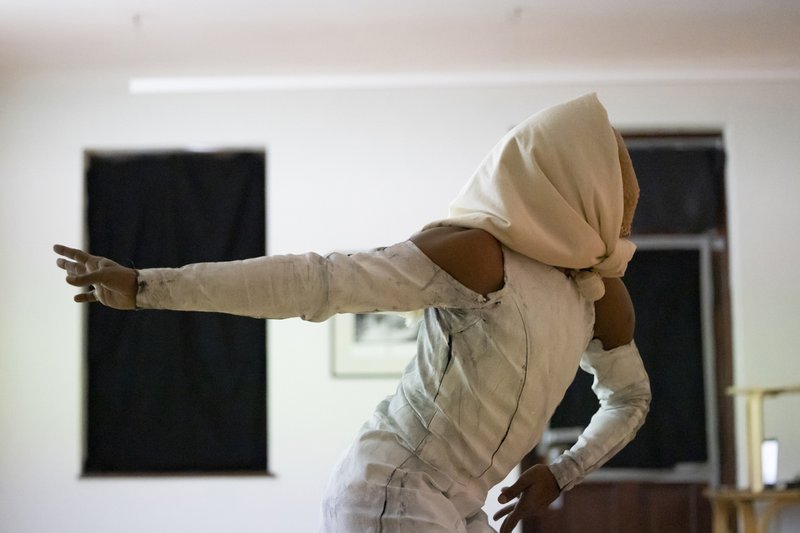
Christian Guerematchi: In the Cultural Embrace
“We are, all of us, locked in the racial embrace, but it does not cuddle us all in the same way.” Phanuel Antwi, On Cuddling. Loved to Death in the Racial Embrace
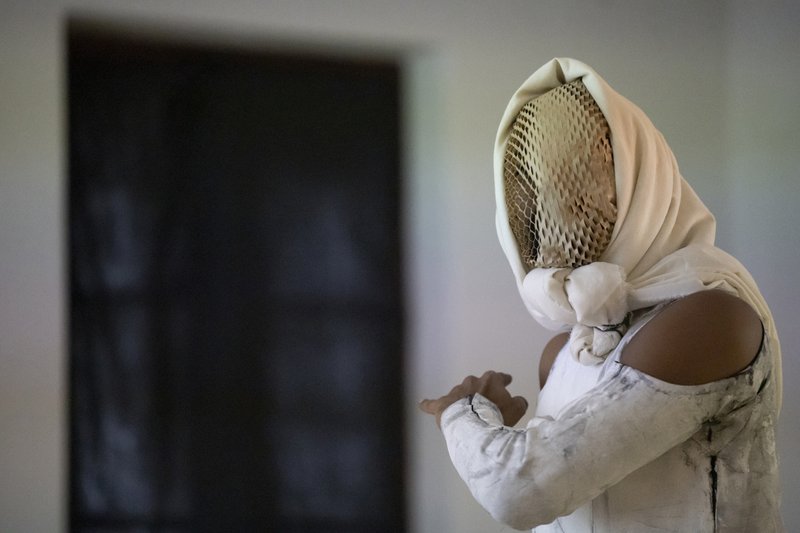
I am a dance maker, born in Maribor, who has worked in Amsterdam for the last seventeen years. The Dutch multicultural space has enabled me to focus my art practice on the marginalised identity of black people. In my artistic research, I am interested in the space between two poles such as black – white, male – female and privileged – marginalised.
The introductory thought by professor and writer Phanuel Antwi has inspired me in my latest dance exploration of the social issues that I am used to from the Western environment. I began actively working as a choreographer in the Netherlands at the time of the struggle against the character of Black Pete, a caricature of black people, which, even recently, was still defended as part of the existing tradition of the Feast of St. Nicholas despite its evident racism. At the same time, the national discussion on racism, which had started a while back, was still ongoing. Due to the country’s colonial past, artists and cultural workers tackled the decolonialisation of the Dutch language and culture. It was precisely in this period that I became familiar with the decolonial vision of Dutch theatre and culture at the University of Amsterdam. As opposed to Slovenian, Dutch is subjected to a censorship of words and denotations that belittle the non-white and marginalised groups of the population, such as the denotations of negroidness and Jewishness. In my research and artistic cooperation with various institutions in Amsterdam, such as the Frascati Theatre, Bijlmer Parktheater and ICK Dans Amsterdam, I often had to explain my national affiliation and European identity as, in the Netherlands, they often distinguish between the autochthonous and allochthonous backgrounds of people. Because there is no such linguistic distinction in Slovenian, I, as a black Slovenian, do not doubt my Slovenianness, in contrast to most so-called allochthonous Dutch people with Dutch culture. The discourse on the decolonialisation of language and culture takes place at several levels. It is also present in the field of art and, by questioning black European identity and the codes of the black body, I try to contribute to this discourse. I do this primarily through projects on which I work together with other artists and researchers, among them Richard Kofi, Shishani and Markus Zacharias – Studio10.2.
Between 2022 and 2024, I completed a two-year integral artistic development project at FPK (The Performing Arts Fund NL). During that time, I explored the mentioned topics in my trilogy Epistemologies of the Body, a broader research project within which I analysed, through my dance performances, lost histories, for example, the period of the Non-Aligned Movement, current social phenomena, such as the Black Lives Matter movement, and the intersection of the philosophical currents of Afropessimism and Afrofuturism.
Now, I again return to the usual topics of my art: black European identity and the narratives of the black body. This time, my starting point is the question of how to share what I have experienced abroad with the Slovenian public. My guiding principle is non-alignment from the perspective of contemporary art. That by no means amounts to any archiving but entails a definition of and a reflection on the known concepts in order to imagine a different future. I begin with the question: What comes after decolonialism? Here, Slovenia and also former Yugoslavia provide a concrete case of a victory against diehard and relentless colonial principles. This inevitably leads to the question of how to live in the future as a unified society of individuals with different views and opinions.
In his book On Cuddling. Loved to Death in the Racial Embrace, Antwi talks about the coupling of Western colonial history and the fate of colonised nations. The concept of the racial embrace, which simultaneously protects and represses marginalised groups, inspires me and I would like to test the weight of this conception also in the Slovenian space. My research field is related to the ability of the dominant culture to identify with the black body, the question of the black body belonging to Slovenian culture and the reflection on how I can bring the perception of the body bearing such a mark closer to the Slovenian audience. Similarly to Antwi, I question the relation with my environment; and even though I can identify with Slovenian culture, I also wonder where I belong and which space I can occupy with the colour of my skin and my sexual orientation. Especially in the time of the migration crisis, the predominant impression is that the Slovenian space is limited for people like me. In this sense, as a person and as an artist, I am also part of the cultural embrace that protects and represses me at the same time.
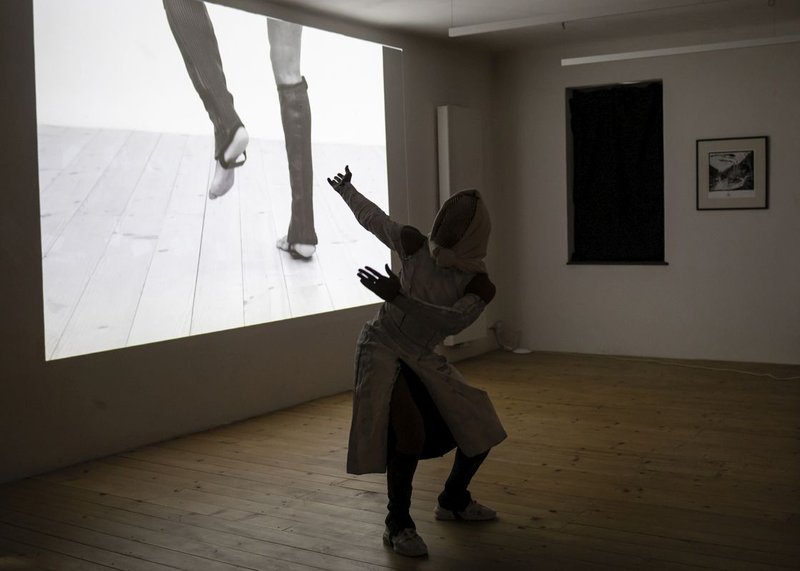
About the artist:
Christian Guerematchi is a dance maker and researcher, born in Slovenia, who lives and works in Amsterdam, the Netherlands. He was an active member of the Ballet of Slovene National Theatre Maribor and the German company Ballett Kiel. At the University of Amsterdam, he discovered somatic movement, theatre studies and dramaturgy. He has close ties with ICK Amsterdam (Emio Greco and Pieter C. Scholten). He has recently completed a two-year integral artistic development project at FPK (The Performing Arts Fund NL), within which he presented his trilogy Epistemologies of the Body, which includes the following works: N.A.M. – Non-Aligned Movement, Hissy Fit – An Echo Between Bodies and FUNK: A Cosmic Horizon. His work Blaq Tito Addressing the Parliament of Ghosts was presented at the 35th Ljubljana Biennale of Graphic Arts in cooperation with Ibrahim Mahama’s Red Clay studio.
Website: christianguerematchi.com
Essays


